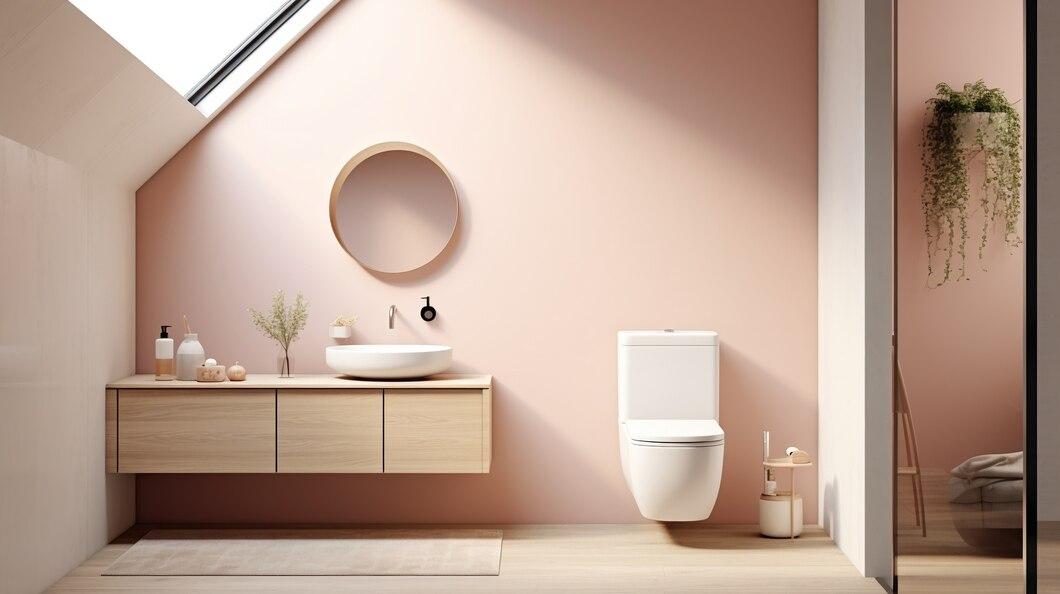Toilet Seat Market Influence of Sustainability and Smart Technology

The global toilet seat market has witnessed significant growth over the years due to factors such as changing consumer lifestyles, technological advancements, and increasing awareness of hygiene. The demand for toilet seats is driven by a variety of elements, including material preferences, smart features, and sustainability concerns. This article explores the key factors impacting the toilet seat market and how they shape its trajectory.
1. Growing Awareness of Hygiene and Sanitation
One of the primary drivers of the toilet seat market is the increasing awareness of hygiene and sanitation. Consumers are becoming more conscious of the importance of maintaining proper bathroom hygiene to prevent infections and diseases. Governments and organizations worldwide are promoting sanitation initiatives, especially in developing regions, leading to a higher demand for modern toilet seats. The COVID-19 pandemic further emphasized the need for better hygiene, boosting the adoption of advanced toilet seats with self-cleaning and antibacterial properties.
2. Technological Advancements and Smart Toilet Seats
The integration of technology in toilet seats has significantly influenced the market. Smart toilet seats equipped with features such as bidet functions, temperature control, automatic flushing, deodorizers, and remote control operation are becoming increasingly popular. These high-tech options cater to consumers seeking luxury, convenience, and enhanced hygiene. Countries like Japan and South Korea have been at the forefront of smart toilet seat adoption, with their influence spreading to other parts of the world.
3. Environmental and Sustainability Concerns
Sustainability is a growing concern in the toilet seat market. Consumers are now favoring eco-friendly products made from recycled or biodegradable materials. Additionally, water-saving bidet seats are gaining traction, as they reduce the reliance on toilet paper and promote environmental conservation. Companies are focusing on developing sustainable solutions to align with global green initiatives and corporate social responsibility (CSR) goals.
4. Material and Design Innovations
The type of materials used in toilet seats plays a crucial role in consumer preferences. Traditionally, toilet seats were made from plastic or wood, but newer materials such as thermoplastic and thermoset plastics offer better durability, ease of cleaning, and resistance to bacterial growth. Additionally, ergonomic designs and soft-close mechanisms are gaining popularity as consumers seek both comfort and functionality.
5. Impact of Raw Material Prices and Supply Chain Disruptions
The availability and cost of raw materials significantly affect the toilet seat market. Fluctuations in the prices of plastic, wood, and metal components impact the production costs for manufacturers. Furthermore, global supply chain disruptions, especially those witnessed during the COVID-19 pandemic, have affected the availability of raw materials and delayed production timelines. Manufacturers are increasingly seeking alternative supply chain solutions to ensure consistent product availability.
6. Changing Consumer Preferences and Customization Trends
Consumer preferences are constantly evolving, influencing the demand for customizable toilet seats. Many homeowners and businesses seek unique toilet seat designs that match their interior aesthetics. Features such as color variety, personalized engravings, and high-gloss or matte finishes are becoming popular. Additionally, brands are offering DIY-friendly toilet seat installation options, making it easier for consumers to upgrade their bathroom accessories.
7. Growth in the Real Estate and Hospitality Sectors
The expansion of the real estate and hospitality industries has played a pivotal role in the toilet seat market's growth. Increasing construction of residential complexes, hotels, and commercial buildings has resulted in higher demand for modern toilet seats. Luxury hotels and high-end residential properties are particularly driving the demand for premium and smart toilet seats with advanced features.
8. Regulatory Standards and Compliance Requirements
Governments across various countries have implemented stringent regulatory standards for bathroom fixtures, including toilet seats. Manufacturers must ensure compliance with hygiene, safety, and environmental regulations. Certifications such as WaterSense and other energy-efficiency labels influence consumer purchasing decisions, making it essential for manufacturers to align with regulatory guidelines.
9. Market Competition and Brand Differentiation
The toilet seat market is highly competitive, with numerous global and regional players vying for market share. Companies differentiate themselves through innovation, pricing strategies, and marketing campaigns. Established brands focus on continuous product development, while emerging players compete by offering cost-effective solutions. Strategic partnerships and mergers also play a role in expanding market presence.
10. Economic Factors and Consumer Spending Patterns
Economic conditions and consumer purchasing power directly impact the toilet seat market. In periods of economic downturn, consumers tend to prioritize essential purchases, affecting the sales of premium and luxury toilet seats. However, as economies recover, disposable incomes increase, leading to higher spending on home improvements and modern bathroom accessories.
Conclusion
The toilet seat market is influenced by multiple factors, ranging from hygiene awareness and technological advancements to sustainability trends and supply chain dynamics. As consumer preferences evolve and smart technologies continue to gain traction, the market is expected to witness further innovations and expansion. Manufacturers must stay ahead of these trends, ensuring product quality, affordability, and regulatory compliance to remain competitive in the industry.
- Art
- Causes
- Crafts
- Dance
- Drinks
- Film
- Fitness
- Food
- Games
- Gardening
- Health
- Home
- Literature
- Music
- Networking
- Other
- Party
- Religion
- Shopping
- Sports
- Theater
- Wellness


